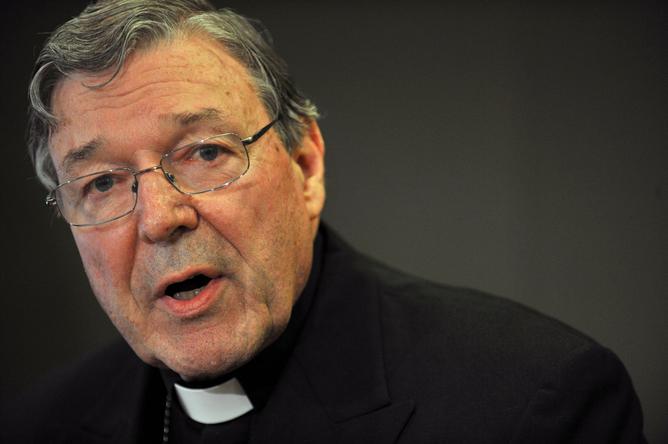|
Can the Vatican go viral? George Pell’s communication challenge
By Richard Umbers
Imagine you were playing with your phone while you waited for the World Cup final to get underway and you suddenly saw a photo of the Pope Emeritus eating popcorn with the current Pontiff on your timeline. Below the photo is a tagline wishing both countries well and a quote from St John Paul II:
In the very near future we may see such a radical reshaping of how we view the Vatican and it will come via the most unlikely of social media champions, Cardinal George Pell, current Prefect of the Secretariat for the Economy in the Holy See. Cognisant that the wireless no longer refers to a radio set, last Wednesday Pell, the former archbishop of Sydney and Melbourne, broadcast a social media thrust for the Vatican by way of a YouTube-streamed interview. New media to spread the wordYou won’t find the tweetless @CardinalPell trolling @RichardDawkins or sending you an invitation to play CandyCrush on Facebook. Pell is, however, a strong backer of initiative and spreading the Gospel message among youth. For that reason he is more than happy to encourage new media despite his own lack of personal interest. We have seen similar bold moves from Pell in the past. During the 2008 World Youth Day, as Archbishop of Sydney, he launched a major social networking initiative - Christ in the Third Millennium (XT3) – which was touted as the Catholic Facebook. As with Bebo and MySpace, XT3 had to face facts and adapt to a niche environment. In its own case, it developed into an online library of Catholic resources, which would piggyback on the major platforms of Twitter, Youtube and Facebook to get the message out. Though based in Sydney, it has a global reach with 60,000 mainly Catholic university student subscribers aged between 18 and 35, a quarter of whom come from the United States: Australian content still exercises a Crocodile Dundee fascination for the Americans. Working more directly with Pell on the reform of Vatican News services is the former chair of the BBC Trust, Chris Patten. He will head the newly formed committee, which is expected to table a report some time next year. Conservative Catholics will not welcome the appointment of a trustee of The Tablet, described by Damian Thompson of The Spectator as a “magazine for geriatric Catholic lefties”. Despite the differences between Pell and Patten, there is some crossover in their respective experiences of governance. Both men have run successful papal visits – Benedict to Sydney in 2008 and to the UK in 2010 – and both have been under the pump for their handling of sexual abuse - with John Ellis by Pell and Jimmy Savile by Patten. What can they deliver?I would eat my biretta if the good Cardinal knows what Hootsuite is, but in budgetary discussions Patten will not have to convince Pell that youth prefer online clips and interviews to weekly editions of L'Osservatore Romano. In imitation of the BBC and our own ABC, the Vatican could adopt a 24/7 approach to getting TV content onto social media platforms. Added to that, the recent canonisation of Saints John XXIII and John Paul II have shown us how important live streaming is for getting an authentic Catholic voice out to youth via XT3 or EWTN rather than outsourcing comment to ex-clergy on state-run TV channels. The online environment is made for the church as people are looking for authoritative sources. The major difficulty lies in how to maintain the integrity of the message within the restrictions of the medium. How can you capture the attention of someone checking their phone at the bus stop or during a meal when the link is to a 300-page encyclical? Neither are social metrics of much help here. Cardinal Pell himself still has 750 followers on Twitter despite the removal of all tweets on that account. Services that the Vatican is well placed to offer concern requests for information – “Ask a Priest” is a favourite on XT3 – and moral encouragement for parishes and dioceses to allow for user-generated content. Any concern that youth co-ordinators might be hosting too many pizza nights or local bloggers are offering heterodox opinions can be managed like any other system that allows for the reporting of offensive content or suppression of spam and trolls. There are risks, but Pope Francis is eager for the church to go out to the peripheries and not fear making mistakes along the way. What’s not to like about a phenomenon that will open the Holy See to further collaboration with laypeople? Don’t expect Whoopi Goldberg, but if funky developers can provide support to other agencies on how to get their message “out there”, expect to see a new Pentecost of the Apostles' successors speaking to the peoples of the world in languages they can actually understand.
|
.
Any original material on these pages is copyright © BishopAccountability.org 2004. Reproduce freely with attribution.
